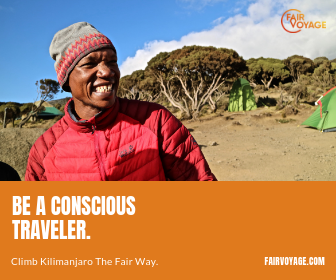A good pair of hiking boots will undoubtedly be your most important purchase for Kilimanjaro, and the one purchase that you really shouldn’t get wrong. While other gear may be fairly standard and you can easily follow other people’s product recommendations or try to borrow from friends, this won’t work with hiking boots. While there are some standard guidelines to be followed, the model that works for you DEPENDS ON THE SHAPE OF YOUR FEET.
It may seem quite a daunting task at first to narrow down from a selection of dozens of seemingly similar models. However, there’s an easy short-cut: GET EXPERT ADVICE in a good outdoors store in your area.
I know it’s tempting to simply order everything online without leaving your living room (at least that was my default for most items), but please do yourself a big favour and DO NOT ORDER HIKING BOOTS ONLINE. Believe me, expert advice will be invaluable.
I was lucky to get such advice and it saved me a lot of troubles. Within minutes, my sales expert had narrowed down aisle after aisle of boots into only four pairs, and the ones he recommended to start with also turned out to be the best. However, it was not only a question of making the selection, but also of advising me what to watch out for while trying them on. Without his guidance, I would have gotten it all wrong. Neither did I know how to properly tie the laces (yes, there are special techniques), how to maintain their functionality, how to work with the right socks and insoles, and so forth.
 I bought my hiking boots at my first store visit (no need for multiple trips back and forth if you have good advice) and never got any blisters from the start. In my case, they were Lowa Khumbu II GTX Trekking Boots
I bought my hiking boots at my first store visit (no need for multiple trips back and forth if you have good advice) and never got any blisters from the start. In my case, they were Lowa Khumbu II GTX Trekking Boots and of course I would highly recommend them if they feel comfortable to you. However, what worked for me (narrow feet) may not work for you, so please don’t take this as blanket recommendation but watch out for the following:
and of course I would highly recommend them if they feel comfortable to you. However, what worked for me (narrow feet) may not work for you, so please don’t take this as blanket recommendation but watch out for the following:
General guidelines:
- Mid-height to protect your ankles
- Mid-weight for maximum efficiency (if too heavy, you end up dragging along excess weight which you do not need as you do no carry heavy bags; if too light, you need to use more muscle strength for stability)
- Gore-Tex material to keep dry
- Leather? I thought I would need full leather boots because I read they are also the warmest. However, bear in mind that leather reduces breathability and you also want your boots to work in hot climates where you start your hike, not only during summit night when it’s freezing cold. I was told it may be a better idea to work with socks and insoles in order to adjust for the climate. Furthermore, leather is also heavier than other materials, thus you would end up dragging along more weight. I was happy not to have full leather boots, and found mine to be so much more versatile and breathable.
Fitting guidelines:
- It all depends on the shape of your feet (narrow/normal/wide). You don’t want your boots to be too narrow (squeezing your feet), nor too wide (sliding around causes blisters and loss of head). The same makers/brands usually always follow a similar cut, so some of them (in my case most of them) might be out of the question for you. This is where expert advice really comes in handy. It would be difficult to find the right cut on your own.
- Buy your boots a size bigger than your normal shoe size. Try them on with thick thermal socks. You should still be able to tightly squeeze an index finger at the back.
- Try on your boots walking uphill and downhill (a good store should have a walking ramp). When walking downhill (and tied tightly at the ankles), your toes should not squeeze against the front.
Now do yourself a favour an visit your local outdoors store to find the right boots for you 🙂 You will also find more helpful guidance in my book .
.
Did you find this helpful? Please share with others, or leave your comments below. Thank you.











